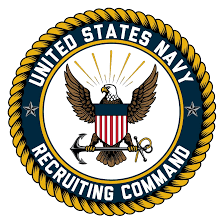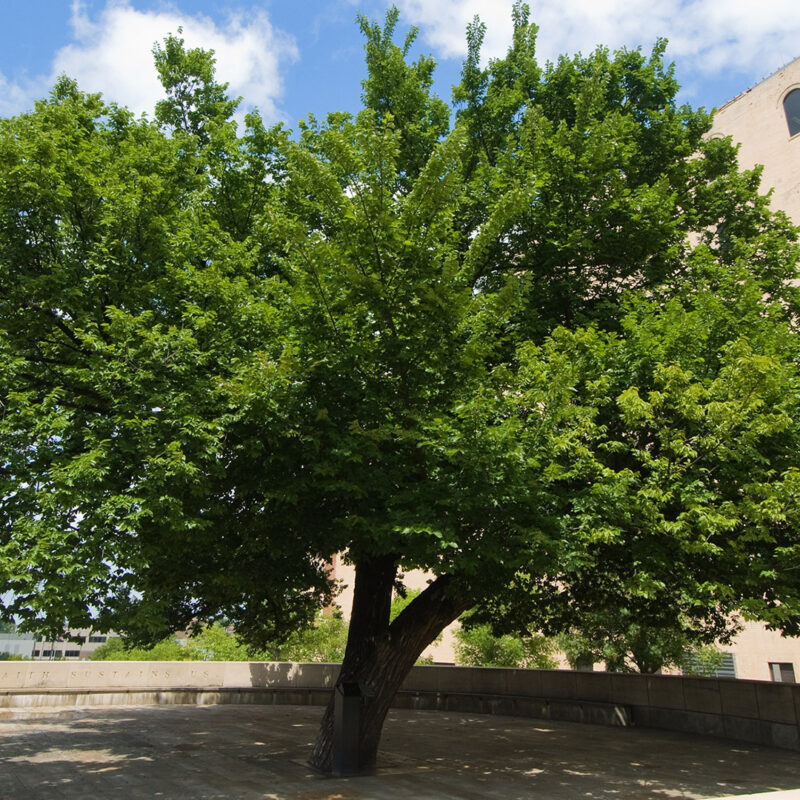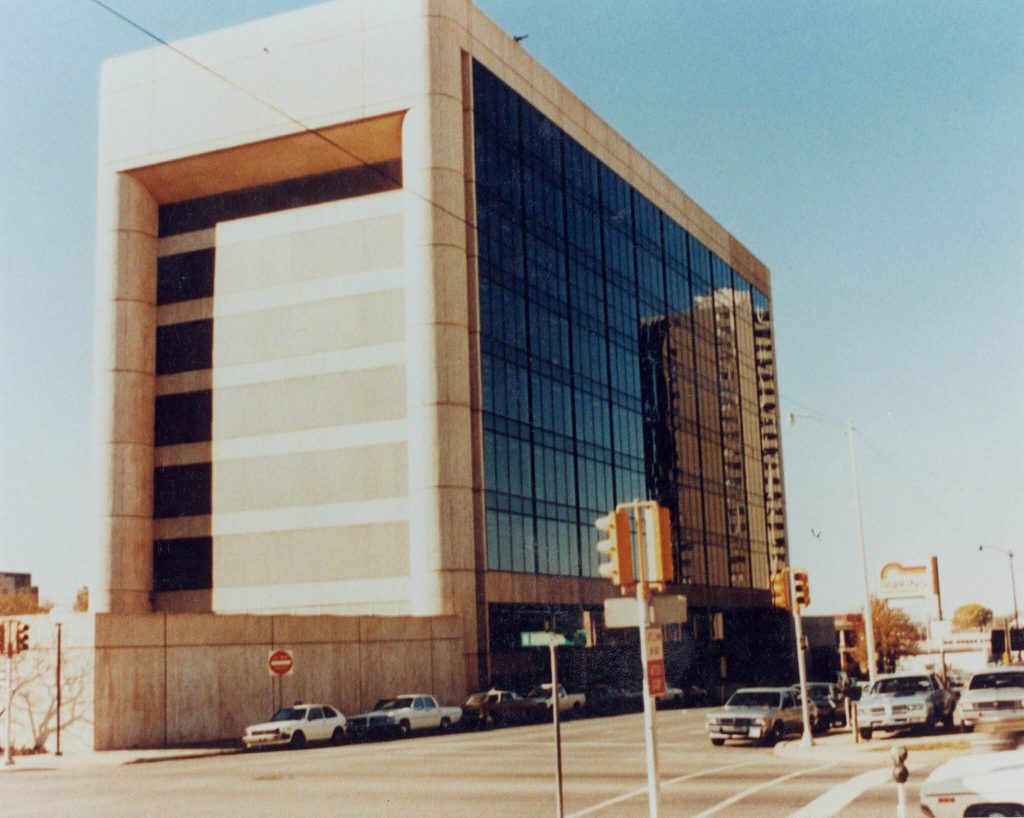Young Oklahomans who enlisted or applied for commissions in the U.S. Armed Forces between March 2nd, 1977 and April 19th, 1995 became familiar with two Downtown Oklahoma City venues. Between those dates the Armed Forces Examining and Entrance Station (AFEES), which became the Military Entrance Processing Station (MEPS) in 1982, occupied the entire second floor of the Journal Record Building located at 621 North Robinson. The recruiting commands of the Army, Air Force, Marine Corps and Navy were all housed at various locations in the Alfred P. Murrah Federal Building located at 200 NW 5th Street. The Navy, which occupied suites 300 through 304, moved from that location in 1991 to a new facility on South Meridian Avenue but not before Yours Truly in-processed onto active duty twice through that office. All enlistees or officer candidates who in-processed onto active duty or otherwise had business in either location can unwittingly claim a personal connection to both buildings. At 9 AM on that fateful morning of April 19th, 1995, the Army was swearing in some forty new recruits.
Most military veterans consider their enlistment to have begun when they walked into their hometown recruiting station. However, the irrefutable fact of the matter is one’s OFFICIAL military entry date of record is when the enlistment oath is administered and affirmed in the respective branch’s recruiting command office unless of course special arrangements are made to have it done elsewhere. It is in fact a matter of documentation regarding every military member’s service record as to where they entered onto active duty. It is not unusual for that entry date to have great significance in the oath taker’s military career and often times for the rest of their life as it is part proof of their status as a veteran.
In the case of Yours Truly, I was in both places more times than I had hoped to be. My first ever visit to Oklahoma City was in October 1976 during my senior year of high school when I intended to enlist in the Navy’s Delayed Entry Program. Because of a rare benign but at the time disqualifying metabolic defect, I was unable to pass the physical. Even still, I got introduced to the obligatory government exercise of “Hurry up and wait” at the AFEES. After being declared “Not Physically Qualified,” I was sent to check in with Navy Recruiting which was then still housed in the south end of the Journal Record Building to receive my one-way bus ticket home. The way to the Greyhound station was along NW 5th Street where I took notice of a block-long construction zone. What was unknown to me then was the skeletal structure being erected on the south side of the street was the Murrah Building. Being in the midst of so many at least temporarily life-changing issues, I paid the eyesore under construction across the street little mind and focused on simply getting home. It was a little over a year later when the chief medical officer of the AFEES, at the behest of all the Armed Forces recruiters, agreed to waiver candidates presenting with my unique but harmless anomaly. Upon learning this I made another attempt at enlisting in the Navy which of course involved being sent down to OKC to once again undergo the usual process. After a repeat of the AFEES drill, my next stop was the new Navy Recruiting Command office located on the third floor of a shiny pristine facility across NW 5th Street known now to all as the Alfred P. Murrah Federal Building. It was there on the third floor in the CRUCOMM office on a cold, snowy Wednesday in January 1978 that Yours Truly raised his right arm to a square and affirmed the U.S. Navy’s enlistment oath. I would find myself in that wonderful office again soon enough on another cold day at the end of the month on my way to Recruit Training Command San Diego.
Some nine years down the road, that convoluted experience with the initial enlistment process felt like ancient history in the life of Yours Truly. It was at that time, early in the final semester of my senior year at the University of Oklahoma College of Nursing, that I undertook the process of applying for a direct commission in the Navy Nurse Corps. I can recall that at ten years old the Federal Building still had its shine; an enduring veneer of clean and appealing newness. Although many sensory characteristics were notable, I paid them little thought as my focus was on more pressing issues. The application process for a commission did in fact involve quite a bit more than an enlistment. I vividly remember working on several hours of tedious paperwork in the CRUCOMM office of the Navy Medical Programs recruiter. Such a time commitment facilitated getting to know the building a little better, like where the restrooms were and the location of the snack bar. I also recall the restroom where I changed into my dress whites for the purpose of taking my commissioning oath in the CRUCOMM office on a warm and uplifting weekday afternoon in the middle of June 1987. That happened to be the first memory that flashed through my head when I heard the news of the bombing late in the morning of April 19th thirty years ago. The sense of relief I felt was indescribable when I learned some weeks later that Navy Recruiting had relocated four years earlier.
Like most of my fellow Oklahomans, I had been happily ignorant that the Federal Building located downtown was named after federal judge Alfred P. Murrah. Like many others who at some point in their lives resided in Oklahoma City and surrounding communities, I also know people who were either injured in the bombing and people who lost immediate family members in it. Those who died have since been eulogized on an annual basis and memorialized in lasting and moving tribute in a manner which is both fitting and proper. So has the building. However, in most stories about those who were killed, few mention many details about the landmark in question. Immediately after the bombing, I had to honestly dig through my many memories of the times I was in the place in order to recall the slightest of details about it as I failed to mention any of the associated minutia in all my journal entries during the many times I had been in and out of there. All this became a fixation mostly because the people with whom I interfaced in my recruiting process, some of whom I can say I came to like, had long since moved on by 1995 courtesy of the Navy.
Of all the places that no longer exist except in the collective memory of those who patronized or saw the inside or outside of them on a daily basis, the Oklahoma City Federal Building possesses by far the greatest notoriety in the Sooner State. It sadly does so for among the worst of reasons. On a pristine spring morning thirty years ago, it took an act of extremist ideology representing the absolute worst of the dankest realm of American depravity to bring gushing forth the absolute best of American humanity. The massive outpouring of shared grief, kindness and generosity in the wake of the bombing was nothing short of impressive and rightly earned the title The Oklahoma Standard. All that genuine human expression was always there in all of us during the best of times. It is a shame though that it took something as awful as the murder of 168 friends and neighbors to bring it all to the forefront after one of the worst crimes in the history of the state. In this time of memorial and reflection, let those of us whose personal journey required our presence in a time and place that is now gone and remember where we were when we took that first big step in serving something greater than ourselves. For those of us who became members of whatever branch of the military we chose between the dates noted above, the old AFEES/MEPS location and the Alfred P. Murrah Federal Building, for better or worse, will forever be a part of our personal story regardless how short our time in each may have been.
Thank you for reading.









“I would remind you that extremism in the defense of liberty is no vice! And let me remind you also that moderation in the pursuit of justice is no virtue!” Barry Goldwater, Acceptance Speech as the 1964 Republican Presidential candidate.
“Those who seek absolute power, even though they seek it to do what they regard as good, are simply demanding the right to enforce their own version of heaven on earth. And let me remind you, they are the very ones who always create the most hellish tyrannies. Absolute power does corrupt, and those who seek it must be suspect and must be opposed.” Op. Cit.
And this is the continuing problem with Republican rhetoric… they make provocative statements which diametrically conflict with each other, and therefore MEAN NOTHING WORTHWHILE, but thereby provoke supporters into rash actions that cause permanent harm.